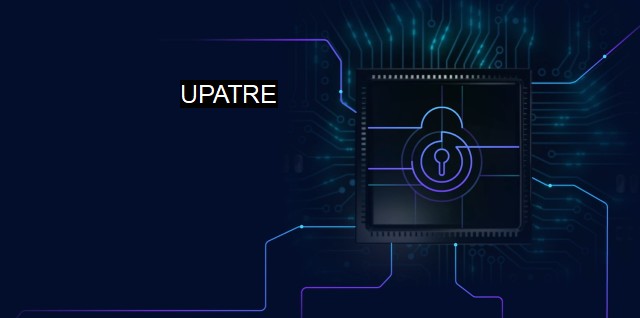What is UPATRE?
UPATRE is a type of malware that emerged in the wild in late 2013, posing a significant risk to the cybersecurity landscape. Its name derived from a binary string found in its early variants, UPATRE has since evolved into principal payloads delivered via spam emails and websites. Operating as a downloader, it is most notorious for introducing severe malware strains, such as Zeus, Cryptowall, Dyre, and Rovnix.Predominantly, its function is to hijack computer systems and infect them with additional malware by uploading malicious executables. Among its chief characteristics is its small size. These diminutive, unobtrusive files, typically no larger than 50kb, enable easy transportation and can bypass rudimentary antivirus software.
The main dissemination method of UPATRE is via spam emails containing panicky messages urging unsuspecting users to download attachments. These "spear phishing" campaigns play on fear to prompt victims into immediate action, such as imitating a banking service with a note about unauthorized transactions or stating that urgent software updates are needed to prevent hacking. Upon executing the file, it spreads and downloads additional malware programs, endangering the security of sensitive information and the integrity of a system.
What makes UPATRE particularly virulent is its ability to morph. Like many contemporary malware, UPATRE exhibits polymorphic behavior, allowing it to change its identifiable features. It achieves this by multiple methods, including changing the order of instructions or using encrypted payloads that only reveal their harmful content upon execution. This impedes traditional antivirus software from identifying the threat, making it rather insidious.
Upon breaching the victim's defenses, UPATRE will frequently act as a vessel for more potent malware types, serving to download these threats onto the victim’s machine. ZeuS, GameOver ZeuS, Dyre, and Rovnix are some of the more notorious examples but UPATRE's list of dangerous cargo is vast and varied. A ZeuS infection could lead on to significant data loss as login credentials, especially those related to financial services, and sensitive personal information are commonly targeted. Similarly, Dyre, and Rovnix infections usually aim to execute financial fraud.
Indeed, UPATRE is notably destructive in its silent nature. The fact that it remains undetected within systems until executing other malware payloads allows it unprecedented access to users' personal data. This means it can cause extreme damage before individuals even recognize they've been compromised. Thus, up-to-date antivirus software and frequent system scans are so crucial in actively defending against these threats.
Origin-defined security protocols and employee education are two substantial aspects relevant to mitigating its impact. Mail-filtering techniques that automatically quarantine suspicious attachments can restrict UPATRE's spread, while training staff to identify and avoid risky emails remains a solid frontline defense.
UPATRE serves as a harsh reminder that no cybersecurity system is entirely immune from the risk of malware infection. It showcases the sophistication and adaptive capabilities of malicious software attacks, continually evolving to dodge detection. it represents a continually developing challenge for the cybersecurity industry – one that all players in the digital landscape should learn from. To combat this ever-evolving threat, robust, adaptive policies, stringent protocols, and agile response cycles that mirror the adaptability of threats like UPATRE are critical.
The fight against malware like UPATRE is an ongoing battle where refining defense measures according to advancements in malware technology is, unequivocally, the only way forward. Cybersecurity defenses should incorporate frequently updated identification methodology, continuous learning from incidents, enhanced technology, and a futurist forecasts based approach.

UPATRE FAQs
What is Upatre and how does it work?
Upatre is a type of malware also known as a downloader that is designed to download and install other malicious software onto a victim's computer. It typically spreads through phishing emails that contain a malicious attachment or link. Once the victim clicks on the attachment or link, Upatre is downloaded and begins its malicious activity.What kind of damage can Upatre do to my computer?
Upatre is a serious threat to your computer's security. It can download and install a variety of damaging malware onto your computer, including Trojans, ransomware, and keyloggers. This can result in the theft of personal and financial information or even the complete takeover of your computer.Can my antivirus software protect me from Upatre?
Many reputable antivirus programs can detect and remove Upatre from your system. However, due to the constantly evolving nature of malware, there is no guarantee that your antivirus program can detect every variant of Upatre or other types of malware. It is important to keep your antivirus software updated and to always exercise caution when opening emails and attachments from unknown or suspicious sources.How can I prevent Upatre from infecting my computer?
To prevent Upatre and other types of malware from infecting your computer, it is important to practice good cybersecurity habits. This includes never opening suspicious emails or attachments, keeping your antivirus software updated, installing software updates as soon as they become available, and backing up your data regularly. Additionally, you can use security tools like firewalls and email filters to further enhance your protection against malware.| | A | | | B | | | C | | | D | | | E | | | F | | | G | | | H | | | I | | | J | | | K | | | L | | | M | |
| | N | | | O | | | P | | | Q | | | R | | | S | | | T | | | U | | | V | | | W | | | X | | | Y | | | Z | |
| | 1 | | | 2 | | | 3 | | | 4 | | | 7 | | | 8 | | |||||||